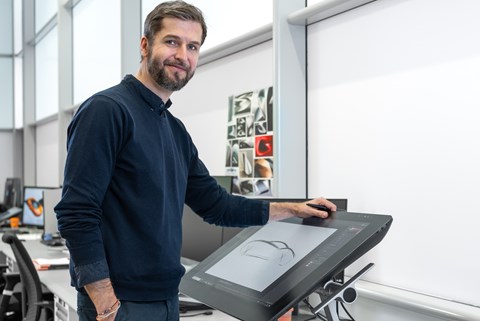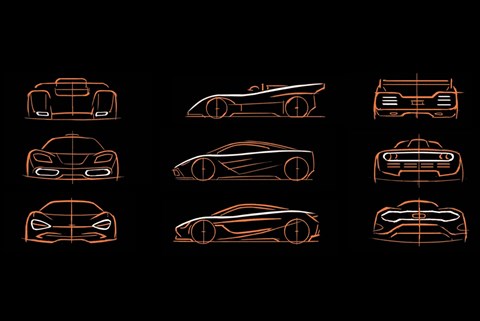► McLaren’s ‘Performance by Design’ strategy
► Maintains the course we’ve seen since P1
► But the brand is preparing for an SUV, and electrification
McLaren Automotive has outlined its design strategy of the future – led by its new chief design officer, Tobias Sühlmann.
Well, we say ‘new.’ Think of it as arguably maintaining the course set by the P1 and beyond, but reducing down the complexity to some key principles that will be on every future car McLaren makes. And, according to Sühlmann, that will extend to cars that will be electrified or electric, and may perhaps feature ‘more than two seats’ – yet another hint about McLaren’s future, larger high-performance family car.

‘We need to do the next steps now,’ says Sühlmann (pictured above), ‘and we need to move the brand forward. There will be a bigger portfolio, possibly, and we need to look into different power technologies. Is there more than two seats? Yeah, possibly. And we need to develop a form language that separates each model from each other – that is quite important.’
So, regardless of powertrain or body style, McLaren says all its future cars will essentially have three continuing cues that are focal to the brand. Those elements are the dual elements on the front end (like the vents on McLaren’s Can-Am cars, or the ‘eye sockets’ on a 750S); a ‘Performance Line’ that runs along the beltline of the car and swoops over the wheel arches; and an open rear end for air flow – something quite clearly seen on the F1, as well as every modern McLaren since.

Include those three key elements and, according to Mclaren and Sühlmann, you can craft whatever you like and it’ll still be a recognisable model for the brand. ‘You need this signature to establish the opposite. Completely separate products to individualise their different purposes,’ Sühlmann tells CAR.
McLaren’s design team also want to design more details into its cars that are designed to thrill, while also having a purpose. Steve Crijns, senior design manager at McLaren Automotive, says visibility is key to a driver feeling comfortable driving such potent sports car and points out the Senna’s in-built lower windows set into the doors: ‘visibility doesn’t just help you drive better, it can also make the experience more exciting. That window [in the Senna] is something we asked for.’
The brand believes that building these key pillars will make distinct and exciting models going forward, including whenever it decides to venture into segments that aren’t normally McLaren’s patch. ‘I guess, for us, it’s the fundament. If you don’t do your homework, the house built on top will shake and crack and fall into itself,’ says Sühlmann.